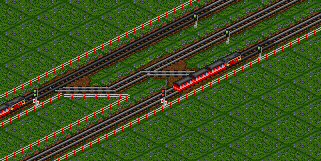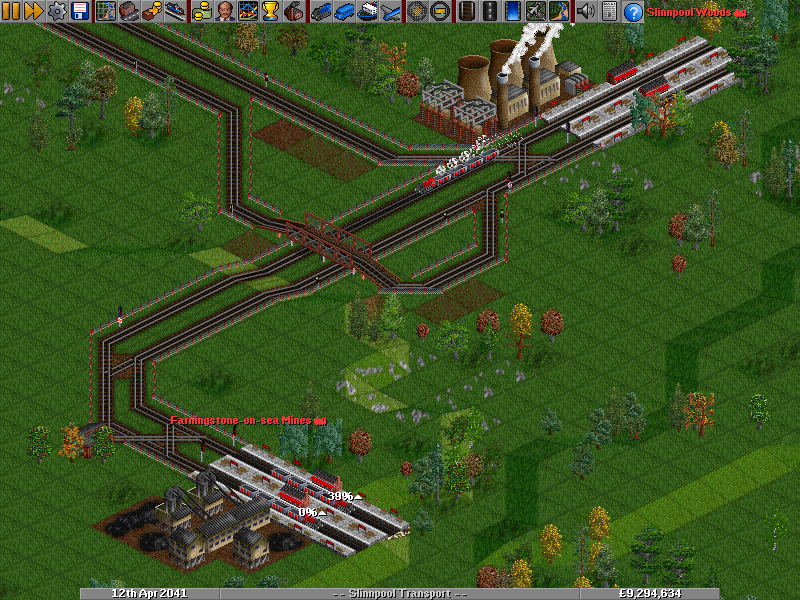

A second train will be allowed on the same junction as long as its route (or path, hence path signals) does not cross the reservation of other trains on the junction. As soon as a train encounters a path signal, it will "reserve" its route to the next signal. These path signals are smart signals, as they consider the route a train wants to take. It behaves the same as its two-way counterpart, but trains can only pass it from one side (the front). The rightmost with the horizontal red bar is the one-way path signal.

#Openttd signals explained driver
Trains can pass this signal from both sides, but will only obey the signal if the train driver can 'see' the light from the front. The leftmost of the two path signals is the so-called two-way path signal. The path signals are marked in the image of the signal selection toolbar at the left. For the tutorial, we'll only be using light signals as they are more easy to distinguish. The semaphores just look different and give your track a more classical look. The upper six are semaphore signals and are functionally the same as the light signal counterparts below them. If you already looked at the signal selection window, you may have noticed not six but twelve signal buttons. For now, you can just ignore the other four signal types. These signals are called Signals, and are by far the easiest to use. Fortunately, almost every need can be met by only two of them. There are six different types of signals in OpenTTD. This will open the Signal Selection toolbar. Signals prevent trains from crashing into each other, so we need a couple of those things.Ĭlick the Build Railway Signals button from the railway constuction toolbar. You can blow up the original depot with the dynamite tool if it's in the way and build a new one elsewhere.īefore you can run the second train you need to make sure that it doesn't collide with your existing train. Make sure both platforms can be reached from the depot. Leave at least one piece of straight track in front of each platform as we'll be placing signals here later. Also, build some track to connect the new platform to the existing track. As long as the new platform touches the original station, it will be added to that station. Go ahead and build an extra platform next to the original coal mine station.
#Openttd signals explained how to
Hopefully you still remember how to build a station and tracks. When the train is back, the other train can go and unload while the first train is loading again. That way, when one train is loading the other train can go to the power plant to unload and come back.

And more is better, right?īefore you can add this extra train, you need some space for it in the station by the coal mine. Always having a train ready to load will increase your station rating which will lead to more of the industry's output being delivered to your station. You are paying a large sum of money for maintaining all those tracks, and it can only be used by one train! If the output of the coal mine is high enough, you may want to add an extra train. In your game, you can have a much longer track, or put your platforms down in a different manner.Ī disadvantage of the above layout is that the tracks and the stations are not used very efficiently. This example is used since both stations easily fit in a single picture. Two stations, some track and a train (click to enlarge) Now that you have built your first railway, you may want to expand it with more trains and more platforms.įrom the previous tutorial you should have a railway that looks like the picture below. Setting vehicle orders Refitting vehicles Replacing vehicles Grouping vehicles Two Platforms Building tracks Building stations Building depots Placing signals Buying & selling trains Converting railwaysRoad construction:īuilding roads Building stations and loading bays Building depots Buying & selling road vehiclesWaterways construction:īuilding docks Building depots Placing buoys Buying & selling ships Building locks and canalsAirport construction:īuilding airports Buying & selling aircraftGeneral construction:īuilding bridges Tunnels LandscapingWorking with vehicles:


 0 kommentar(er)
0 kommentar(er)
